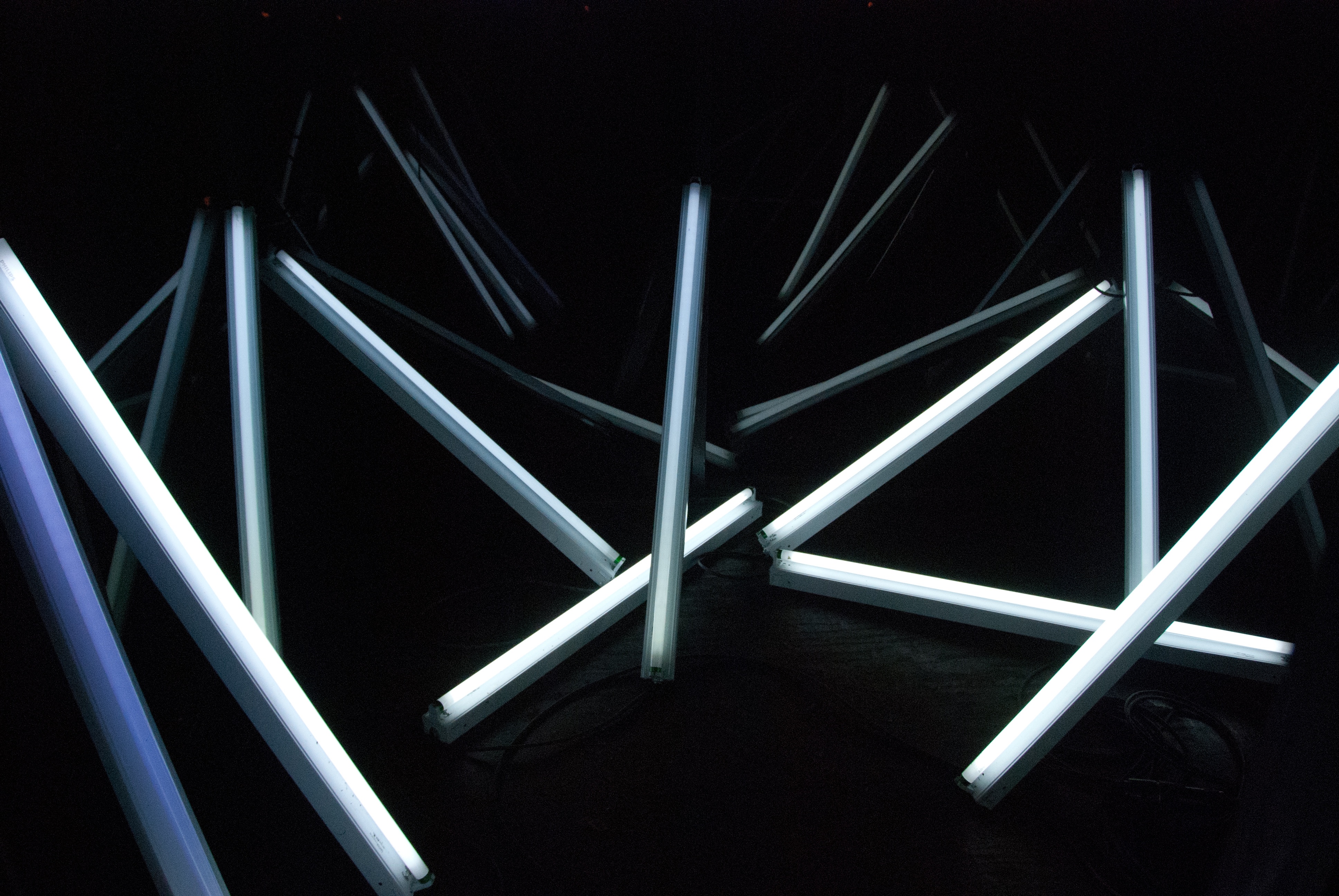DISPATCH - Apr 7, 2012 (4:35 p.m.)
NEW YORK, NY
Right now, a team of dancers, choreographers, visual artists, performers and musicians may be holding their breath. Tonight is the final performance of a three-day run of "On the Beach" at the Baryshnikov Arts Center in New York City. "On the Beach" is inspired by the seminal opera "Einstein on the Beach" by Robert Wilson and Philip Glass. The five hour opera is celebrating its 35th anniversary this year with an international tour. (Yes, it's five hours. No, there's no intermission. Yes, you can move about at will.).
In addition to staging a world-wide tour for "Einstein on the Beach," Wilson selected five artist teams to re-interpret sections of the unusual opera. The results are playing out on the Baryshnikov Arts Center from Apr 5 to 7. Before peering into the creative interpretation found in "On the Beach," it's good to know something about the opera it's based on.
"Einstein on the Beach" is an opera in four acts that are framed and connected by five "knee plays" or intermezzos. It's a collaborative work by Glass and Wilson with choreography by Lucinda Childs. The opera centers on a historical person (Albert Einstein) but it's his thinking and scientific processes that are dramatically presented.
The opera was groundbreaking on several fronts. Instead of traditional orchestra instruments, the music was composed for synthesizers, woodwinds and voice. Instead of narrative, the opera relies on recurrent images juxtaposed with abstract dance sequences to tell the story.
"Einstein on the Beach" premiered in 1976. The avant guarde opera was described as "a visual feast and a sonic experience" by Brooklyn Academy of Music (BAM) executive producer Joseph V. Melillo in a documentary about "Einstein."
"On the Beach" brings together five artist teams to react and interpret sections of the Wilson-Glass opera. The artists are international. Some have never worked together. All were selected by Wilson and have been artists in residence at The Watermill Center in Water Mill, NY.
.
.
Santiago Taccetti (visual artist, Argentina) and Manuela Infante (theater director, Chile) present a single Chilean musician who begins a "process of scenic experimentation to explore the concept of 'perceptible and non-perceptible change'" through subtle deviations in repetition, according to The Watermill Center. Their piece may ask audiences to ponder whether their modes of perception need to change to interpret "Einstein on the Beach."
Jonah Bokaer (choreographer and dancer, New York City) and Davide Balliano (visual and performance artist, Italy) present a "reductive reimagining of the 'Train Sequence' in Act I of "Einstein on the Beach." Themes of height, progress, locomotion and speed are abstracted from the work and set in a "fractal landscape of jagged edges" to re-imagine the scene in 2112, according to a release.
The Degenerative Art Ensemble (performance company, Seattle) translated a libretto in "Einstein" by Christopher Knowles into Japanese, Korean and Swedish and mixes it with gesture, rhythms, melodies and words. This is combined with dance, live music, animation and text to "delve into a vortex of the folding of time and space," according to The Watermill Center.
Steven Reker and People Get Ready (choreographer, dance, musician, New York City) created "sonic landscapes through movement" and extend to let "the poetic images of Robert Wilson's iconic staging influence how they shape sound and action," according to a release. A "microcosm of folly and pleasure" will be created through voices, props and gestures.
Marcia Moraes (theater director, choreographer, performer, Brazil) and Egill Saebjornsson (visual artist, Iceland) brought in 10 collaborators to re-create the "knee plays" from "Einstein on the Beach." Fragments of text, images and music from "Einstein" are deconstructed so repetition and slow changes are observable through words, meanings, notation, rhythm and physicality, according to a description. The main characters are a group of travelers inspired by "The Argonauts" from Greek mythology. The piece incorporates video projections, opera singers and original music. It also makes use of 3-D animation and aerial techniques.
BASIC FACTS: "On the Beach" is being presented from Apr 5 to 7 at the Baryshnikov Arts Center's Jerome Robbins Theater, 450 West 37th Street between 9th and 10th Avenues in New York City. Performances are at 8 p.m. Tickets are $20. The first two shows were sold out. Info and tickets to tonight's performance can be found here: www.bacnyc.org. "On the Beach" is presented by the Baryshnikov Arts Center and The Watermill Center.
"Einstein on the Beach" premiered on July 25, 1976 at the Avignon Festival in France. It was presented by the Byrd Hoffman Foundation. The music was performed by the Philip Glass Ensemble. The opera immediately toured to venues in Hamburg, Paris, Belgrade, Venice, Brussels and Rotterdam before traveling to the Metropolitan Opera House in New York City in November 1976.
"Einstein on the Beach" was revived in 1984 (BAM) and in 1992 (toured internationally). The current tour presents the opera reconstructed and produced by Pomegranate Arts Projects. The first performance was held on Jan 20, 2012 at the University of Michigan's Power Center in Ann Arbor. The tour began with a World Premiere on Mar 16 in Montpellier, France. Stops include Italy, London, Toronto, Mexico City, Amsterdam, Hong Kong and Berkeley, CA. It will appear at BAM on Sept 14-16 and Sept 19-23, 2012. For details, visit www.pomegranatearts.com.
The Watermill Center also has info: http://watermillcenter.org/
________________________________________
© 2012 Pat Rogers and Hamptons Art Hub. All rights reserved.

